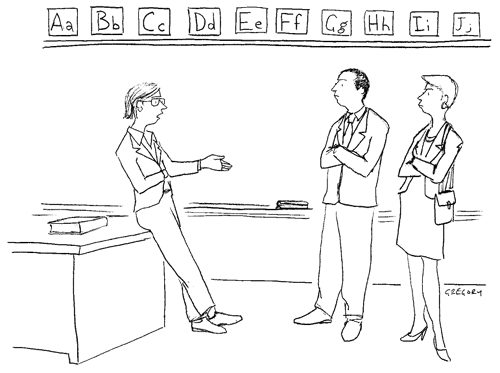take action improving site speed
take action! improving site speed"I'm afraid we're going to have to put your son in a class for children with slower modems."
In Hollywood, it's said that one can never be too rich or too thin. But on the web (where most professionals are neither as rich nor as thin as they once were) only one such maxim applies: You can never be too fast. Speed is the single most important factor for any web site, regardless of its audience, focus, or goals. For all web users from the clueless newbie to the cranky veteran have one thing in common: They hate to wait. They expect the web to move as fast as their desktop applications as fast as their minds work, really and even a few seconds of lag time can set them on edge or send them packing. "Something about the web has just made my attention span shrink," says Noah Mercer, former CTO of Nextdoor Networks. "It's measured in hyper-seconds. If a site's slow, and I don't need it, I either abandon it or find another site that does the same thing. So for that reason, I think speed is very, very important." Indeed, slowness is the number one complaint of web users. And it affects a site's success in more ways than one. Speed affects
Traffic It's a fact: The longer users have to wait, the more likely they are to leave. Just ask Omar Wasow, founder of BlackPlanet.com. As traffic to BlackPlanet grew, they had to increase their capacity adding more and more servers to handle the rising tide. Every time they began to hit their limit, the site slowed down under the strain, and traffic dropped off. "When traffic plateaued, it wasn't because interest had diminished, but because we'd basically hit our capacity," Wasow said. "The site was getting so slow that people weren't spending as much time on it. When we threw more hardware at it, all of a sudden it would start to grow again." Sales Just as speed affects traffic, it also impacts sales. "Speed is more important to commerce sites than content sites," says Jim Morris, former Director of Software Engineering for Fogdog Sports, now GSI Commerce, Inc. "On content sites, you're clicking and reading, clicking and reading. But on commerce sites, you're clicking through pages at a faster rate."
All web users from the clueless newbie to the cranky veteran have one thing in common: They hate to wait. Quick clicking makes customers more aware and less tolerant of lag-time. So transactional sites are often held to a higher standard. And the stakes are also higher. Content sites may profit from visits of any length (because revenue is based on the number of ads served) but visits only matter to a commerce site when they result in a sale. Pacing For some sites, timing is everything. The order and pacing of events can impact user understanding on transactional sites and even content-based sites. It's hard to dictate timing with any precision, says Wendy Owen, principal of Giant Ant Design. "But by thinking about speed image size, download time you take more control over pacing." Cost The main reason to focus on speed is its impact on traffic and revenue. "But speed is also important from a cost perspective," says Noah Mercer. "If a site is running slowly, it's often because it's using a lot of machine or network resources. It's expensive to add more resources to make it run fast. So from that perspective, it's a good idea to have things run as efficiently as possible, and that's usually connected to speed."
|
EAN: 2147483647
Pages: 195
